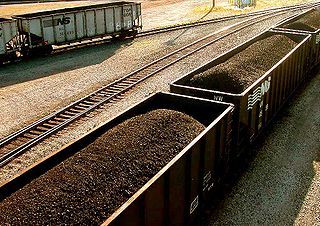Understanding the Path from Coal to Renewable Energy

Glenn, as I’ve said before, there are very few people who understand all this with anywhere near the level of clarity and detail that you do. And even if that weren’t the case, recognize that forward progress here is rooted far more deeply in politics and money than in reason and a sense of serving the people.
Also, you should note that the U.S. is not at all representative of the world as a whole when it comes to making this transition. There are countries, Germany being the most obvious example, that are opting for extremely aggressive paths into renewable energy. Now, you may point out that they’re struggling mightily to maintain the stability of their grid, and I don’t argue that; I point out only that the rest of the world doesn’t necessarily behave like the U.S.

Craig,
While I respect Germany’s push towards clean energy (though I do not respect their aversion to nuclear power), it’s important to understand that Germany can do something that we cannot do. They can easily sell their excess power to neighbors and import power from neighbors when their power production falls short.
Even better, they have a large baseload power source as a neighbor in France – with their endless nuclear power capacity, and they have a wonderfully adaptive balance power source from the excess hydropower in Scandinavia.
We can’t rely on neighbors to balance our power… If we suddenly see our wind turbines producing too much energy, we cannot sell that energy to Canada so that they can tamp down their hydropower flows and store the excess energy for when we need it, we have to just curtail the wind energy and it’s lost to nature. Also, if the winds lull and the day is cloudy but hot and we simply cannot produce enough energy, we can’t rely on the continuous overproduction of baseload power in Mexico to cheaply provide whatever else we need, we have to get the power from our own fossil fuel sources, which we cannot decommission because we will face demand surges that will need the extra power.
I’m not trying to belittle Germany’s effort – as it’s clear that they are committing far more of their GDP to clean energy than we are, and they are making great strides… But we could not copy their efforts here.
🙂
Just remember that we oversaw a ~12% drop in our total CO2e emissions between 2005 and 2013… Yes 2014 will show a significant bump (cold winter, there will be much more coal burned this year – as we consumed most of our NG inventories over the winter and we cannot use as much NG for power over the summer), but the overall trend is downward, and the trend per-capita is significantly downward.
We’re very gradually moving in the right direction, though it’s easy to get frustrated with the pace.
😉
Good points. And, re: energy storage, this is a call for a solution like WindFuels: http://2greenenergy.com/2012/11/13/approach-to-synthetic-fuels/.
Yes, I am frustrated, as I express in others posts as well, e.g., this one from earlier today: http://2greenenergy.com/2014/06/29/charts-industry-clean-energy/.
Another point: as we refurbish and build out our grid (a task that needs to happen for a number of reasons), it will become easier to transmit large amounts of power over long distances, making our situation more like Germany’s.
This is true, and it’s happening. You can see it in the numbers. Last year we built fewer wind turbines than we had in any year in the past decade, but wind energy production still increased by ~27 TWh simply due to grid upgrades allowing better transmission so less curtailment was required.
We’re getting there, it’s just slow.
But we have something like 27 times the area of Germany to build electric infrastructure for, with only 4 times the population. Canada is worse off by nearly an order of magnitude… getting the extremely high-power-capacity grid infrastructure built for lower population densities is far more of a burden on the populace… We’re doing better, and every year we’re getting further along.
The most exciting thing that’s coming out – from my perspective – is Elio Motors new car. I’m absolutely hoping to buy one as soon as it is available, and I seriously doubt I’ll be alone.
🙂
Re: the Elio car, I’m not sure “the dogs will eat the dogfood,” as they say — based on that futuristic look. Gotta like the low MSRP though.